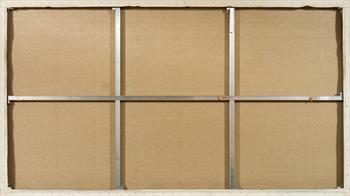5011
Herbert Brandl*
(Graz 1959)
„Untitled“
2003
oil on canvas; unframed
165 x 300 cm
signed and dated on the reverse: Brandl 2003
Provenance
private property, Austria
Literature
cf. exhibition catalogue, China retour. Im Osten geht die Sonne auf, im Westen auch., Vienna 2005, p. 114, ill.19.
Estimate: € 40.000 - 80.000
Hammer price: € 40.000
Auction is closed.
Herbert Brandl’s first paintings of mountains were created after a visit to Switzerland: overwhelmed by the majestic peaks, glaciers and the radiant light, he stored, as it were, the archetypes of the mountains in his head and began, at first only from imagination, to paint pictures in which the line between abstraction and representational painting became blurred. Later, he also used photographs as “models”. The untitled works focus on the form, appearance and essence of the mountains, whereby colour fields can simultaneously represent snow, earth, grass, sky, ice or air.
The artist prepares his pictures mentally, but they are painted with very fast, expressive strokes, incorporating chance occurrences and accidents as well as constant intuitive changes. Real things that have been seen and unclear memories are thus quickly and dynamically translated into a pictorial language. In the process, he also likes to smear paint with small wooden blocks or kitchen paper. Using a wallpaper brush, white splashes are transformed into snowfields or crusts of light-coloured paint are applied, plaster-like, with a trowel and scraped off again to become ice. Brandl takes images from nature, stores them in his mind and processes them anew through painting. His chosen form is in keeping with bold ways of seeing: monumental dimensions, intensive colours and frontal views “conquer” the landscape without harming or devaluing it. Nature is presented as an abstract pictorial illusion in which pure colour creates a sensual connection with the landscape.
“The direct encounter and transformation are, then, the two most important aspects of the aesthetic contemplation of nature and of landscape painting. Landscape is not merely one’s perception of the earth’s surface, but a mental act in which, with the aid of observation of nature, self-reflection and mood, the portion of nature perceived is recreated and experienced as an image of the whole of nature.” (M. Eberle, Individuum und Landschaft: zur Entstehung und Entwicklung der Landschaftsmalerei, second edition, Giessen 1984, p. 9)
(Ina Waldstein)


